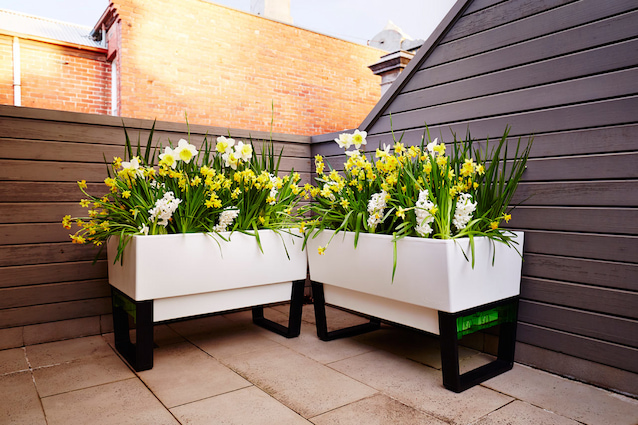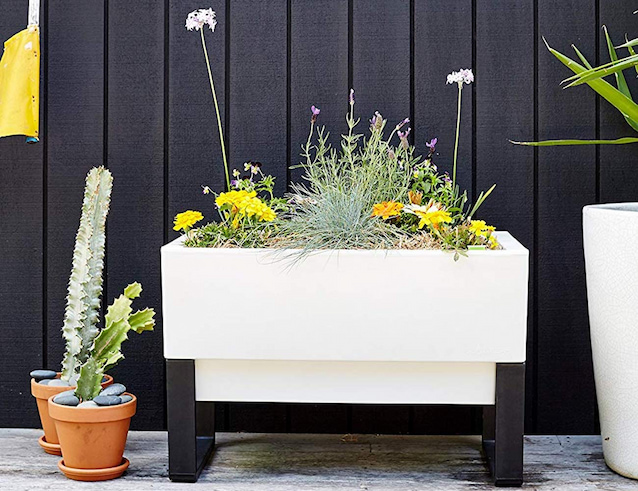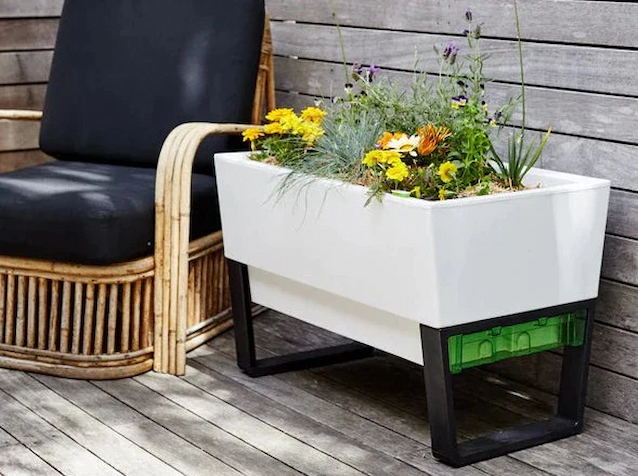Guide to Self-Watering Planters: The Importance of Consistent Watering for Healthy Plants
Taking care of plants is a rewarding hobby. You give them your time, care and attention, and they, in return, reward you with their delicious fruits, enticing scents and colourful splendour. Unfortunately, many of us tend to forget or don’t have time to water our plants as often as we should.
The Benefits of Consistent Watering
It’s easy to forget to water our beloved greenery, especially when life gets busy. But did you know that proper watering is crucial for the health and growth of your plants? Just like us, plants need a consistent supply of water to thrive.
When water is available regularly, plants can absorb the nutrients they need to grow strong roots and thrive. Proper watering also helps protect against pests and diseases and keeps their leaves looking vibrant and healthy. So, if you’re tired of seeing your plants wilt and wither, it’s time to get serious about watering.
Self-Watering Planters: The Solution to Consistent Watering

Manual watering can be a challenge, though, especially for busy gardeners or those who travel frequently. Inconsistent watering schedules, overwatering, and underwatering can all lead to stress and reduced growth. Self-watering planters are an excellent solution for meeting your garden’s hydration needs.
The innovative self watering plant boxes on the market come with a built-in water reservoir that slowly releases water to the soil as needed, reducing the risk of overwatering or underwatering. As a result, you can expect the following benefits.
Gardening Made Super Convenient
Self watering plant boxes make taking care of indoor and outdoor greenery extremely simple, especially for those who have forgetfulness, have busy schedules, or travel frequently. Simply filling the tank once every two weeks will allow you to stop thinking about watering your plants and go about your daily activities.
You won’t need to find someone to look after your greenery while you’re away so you can pack up and go on vacation. Additionally, there is no chance that a plant will instantly wither away just because you failed to water it.
Improved Plant Health

Besides offering the right amount of hydration, these pots also allow the roots to absorb more nutrients necessary for growth. When you water a plant in a conventional pot, the excess water drains through a hole at the bottom after passing through the soil. As a result, some of the nutrients in the soil are lost along with the water, necessitating regular fertilisation or repotting of the plant to replenish them.
However, in a self-watering container, the water is located below the soil, helping to retain the nutrients rather than passing through the soil from above and washing off the nutrients. The bottom reservoir also stimulates the roots of the plants to develop downward, towards the water source rather than horizontally, as is the case with conventional planters. When the roots are deep and strong, the other parts of the plant also thrive better.
Good for Water Conservation

In today’s world where droughts are common, conserving every drop of water counts. In contrast to conventional planters where surplus water flows out and evaporates, these containers utilise water efficiently, only providing the plant with the amount of moisture it requires.
Additionally, the heavy soil covering the reservoir prevents the retained water from evaporating. As a result, even for thirsty plants, watering amounts are significantly lower.
Choosing the Right Containers
When choosing a self-watering planter box, consider its size and shape, the material it’s made from, and its capacity. If you have a large plant or several plants, you may need a larger pot with a larger reservoir. Similarly, if you live in a hot and dry climate, you may need a planter with a larger water capacity to keep your plants hydrated.
How to Use These Innovative Containers for the Best Results
Setting up a self-watering planter is easy, and maintaining the water level is a breeze. Simply fill the water reservoir, plant your seeds or seedlings, and keep an eye on the water level. When the water level drops, add more water to the reservoir. To ensure the best results, choose plants that are well-suited to the environment of your self-watering planter and follow the manufacturer’s instructions for the best results.
Do Not Use These Pots If You Have the Following Species
Unfortunately, not all plants can be grown in these contemporary planters. For starters, young plants without strong root systems won’t be able to draw water from the reservoir. When they are big enough, they need to be re-potted, thus they must be kept in a conventional pot.
Succulents, cacti, and orchids are among the plant species that prefer the soil to completely dry out between waterings. These plants’ roots may decay due to the self-watering pots’ constant dampness.
To Sum Up
These modern pots are an excellent solution for ensuring consistent watering for your plants. With a built-in water reservoir, you can reduce the risk of overwatering or underwatering and go away for a few days without worrying about your plants. With the right self-watering planter, you can enjoy healthy and vibrant plants all year round. So why wait? Invest in a self-watering planter today and watch your plants thrive!



